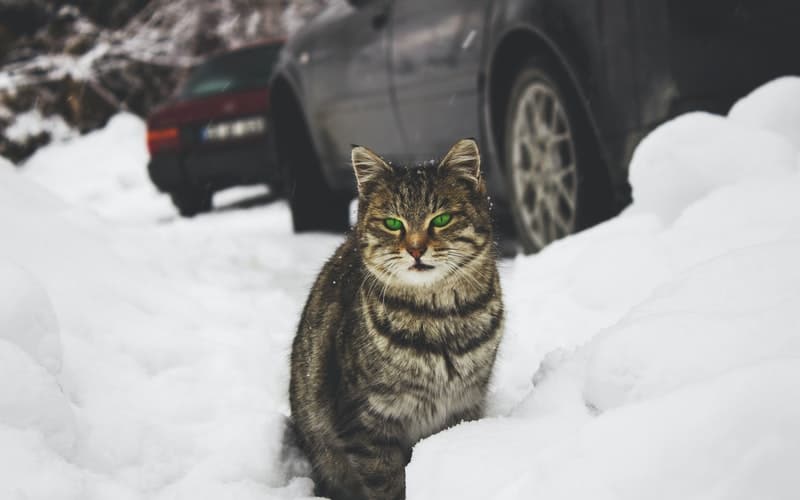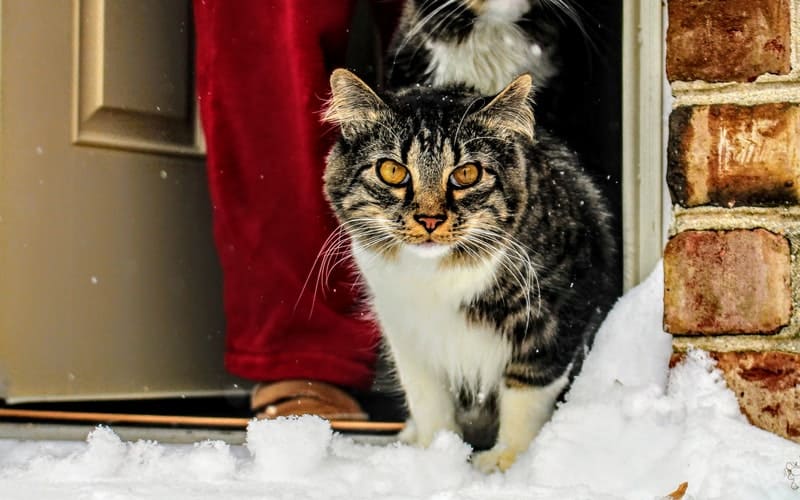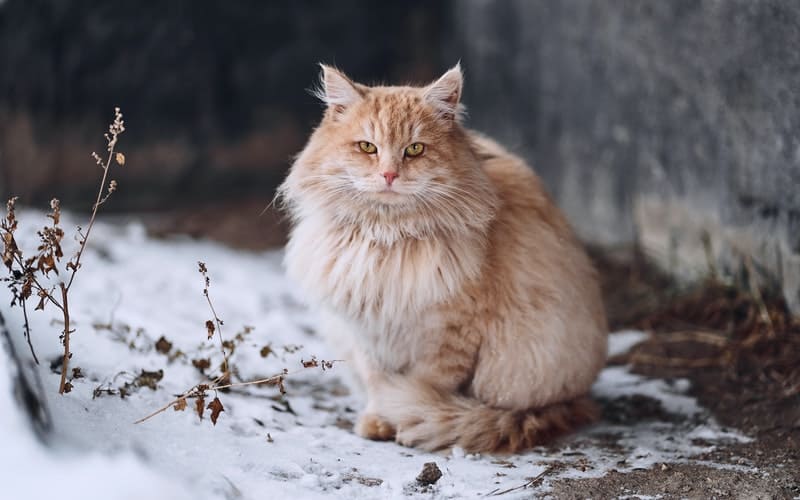Last Updated on March 18, 2022 by ellen
Posts may be sponsored. This post contains affiliate links, which means I will make a commission at no extra cost to you should you click through and make a purchase. As an Amazon Associate I earn from qualifying purchases.
We’ve had record cold temperatures in many parts of the country this year, and this has some pet owners concerned. Have you read my post with winter dog walking tips?

Table of Contents
How Cold is Too Cold for a Cat?
Even though our pets are wearing fur coats doesn’t mean that it’s OK for them to be outside in all types of weather. Even though pets have evolved from wild animals, that doesn’t mean that they are still suited to be out in very cold temperatures.
In rural Vermont, many farms have barn cats that have free range of the farm at all times. But, during the coldest temperatures, they retreat inside for a warm spot in the hay with the cows or horses.
No animal should be left outside for long periods of time in the cold. They need warm shelter from the cold, wind, and precipitation.

Are cats OK in the cold?
While your cat will probably be fine for an afternoon prowling the neighborhood when it’s 45F out, they should not be left out for long periods of time.
If the temperatures get too cold, your cat can get hypothermia and frostbite just like you can. The best way to help protect them is to let them inside.
If you have stray cats in your neighborhood, you can provide an outdoor cat hut for them to shelter in. All you need is a few hay bales and a protected area to provide some type of shelter.
Do not use blankets as these can get wet and absorb moisture. This means it won’t help keep your pet warm.
Here are some tips to care for feral cats in the winter.

How do cats stay warm outside?
As with any animal, they need to use energy to stay warm. Animals and people use food to produce and conserve energy. A healthy diet will ensure that they have a healthy coat with an extra layer of fat.
So what is too cold for a cat?
Veterinarians recommend that your cat NOT be allowed to stay outdoors without a warm spot to shelter when temperatures are below 45F. If the temperature drops below 45F consistently, they will need to have some type of indoor shelter to stay warm.
If your cat is outside and the temperature drops below freezing, they can get hypothermia and frostbite. Both of these can lead to death.
The cold temperatures can cause their heart to have difficulty getting blood throughout their body. Their central nervous system can begin to shut down.
They really need to have some sort of outdoor cat shelter when temperatures are that cold.

How can I keep my outdoor cat warm?
The best thing to do is to let them inside your home. If they are so skittish that they won’t come inside, provide an insulated spot in the garage with bales of hay up off the cold ground.
A cat bed in the corner of the garage between a den of hay bales should work well enough provided it doesn’t drop too far below freezing.
If you have an outdoor cat and you are in an area that regularly gets very cold temperatures, you might want to consider some type of heated outdoor space for them if you cannot get them to come inside.
This is a heated cat hut that could work if it was in a sheltered spot like a garden shed or garage.
A thermal cat bed would also work in a garage provided your temperatures don’t go too low.
Keep in mind that cats that are older or have health issues will have less of a tolerance for cold weather than younger, healthy cats. When in doubt, always speak to your veterinarian.

Ellen runs a small pet sitting business in southern Vermont. She has experience with a variety of small animals, dogs and cats. She has also cared for ducks, chickens and rabbits. Combined, she has over 20 years of experience in pet care and pet sitting.